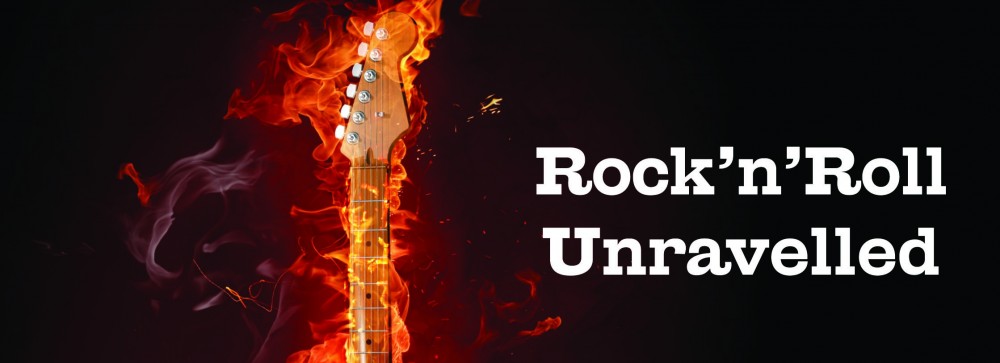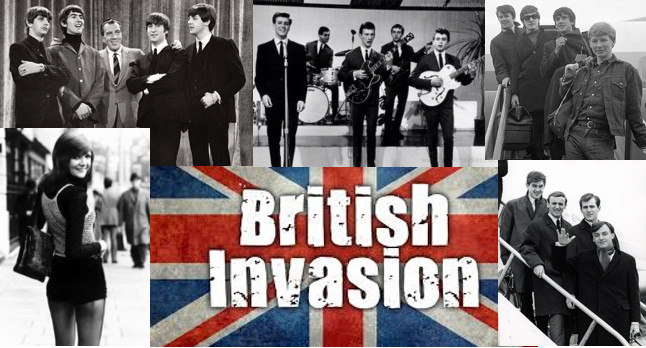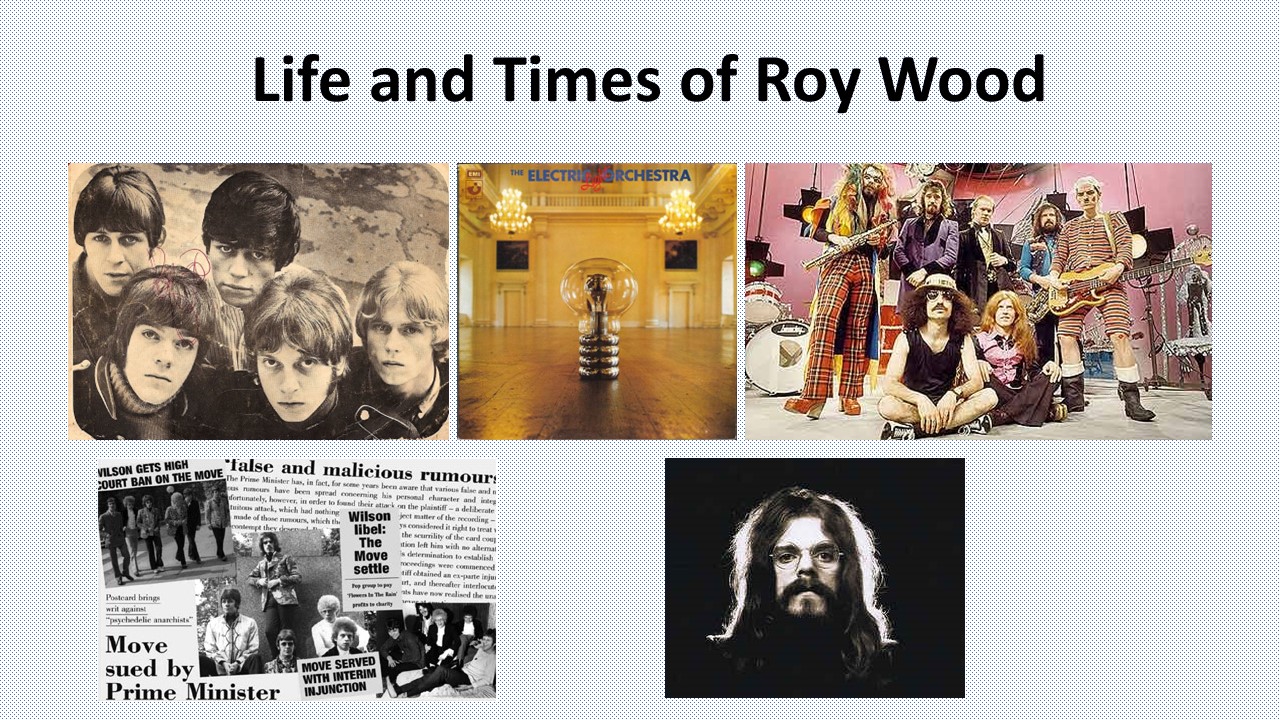Merseybeat Groups Led British Invasion
Check out which of the bands
…mentioned here are
ON TOUR NOW
LISTEN TO THE PODCAST OF
Merseybeat Bands Led the British Invasion
The British Invasion lasted from early 1964 to around 1966. It was a time when British artists and bands dominated the American music scene. In fact, some American bands adopted British sounding names, in an attempt to gain some radio air-time. A band calling themselves “The Beefeaters” only found fame after changing their name to “The Byrds”.
This article looks at how the British Invasion came about and the fact that much of the initial success in 1964 was down to Liverpool’s Merseybeat groups.
To see how the British Invasion came about we need to explore the development of rock’n’roll on both sides of the Atlantic.
American Music in the 1950s and early 1960s
In America rock’n’roll grew out of a fusion and of what had been more-or-less exclusively black or white music. In the early 1950s Cleveland DJ Alan Feed coined the term “rock’n’roll” for this fusion of blues, R&B, gospel, country and rockabilly. On 5 March 1951, Jackie Brenston and his Delta Cats recorded Rocket 88 at Sun Studios in Memphis. This is often cited as the first rock’n’roll record. Bill Haley and His Comets released (We’re Gonna) Rock Around the Clock for the first time on 10 May 1954, as the B-side of Thirteen Women (And Only One Man in Town). It failed to trouble the charts at that time. But when the movie Blackboard Jungle was screened for the first time to American audiences on 25 March 1955, it was a very different story. The movie opened with (We’re Gonna) Rock Around the Clock playing over the opening credits. It was a smash hit and this kick-started rock’n’roll around the world. Meanwhile, Elvis Presley was beavering away at Sun Records, where he released five singles, to little avail. It all changed when he moved from Sun to RCA. On 27 January 1956 he released his first single there, Heartbreak Hotel. He quickly became the King of Rock’n’Roll and the genre went from strength to strength.
Beginning of the end for American rock’n’roll
Less than two years later the golden age of rock’n’roll started to falter. In October 1957 Little Richard was on tour in Australia, when he found God and renounced rock’n’roll. In January 1958 he entered Oakwood Theological College in Huntsville, Alabama to become a Seventh Day Adventist minister. He only performed gospel songs until his return to rock’n’roll in 1962. Jerry Lee Lewis arrived in London on 22 May 1958 for his first British tour. When the press discovered that the young lady with him, Myra Gale, was his 13-year-old wife and the daughter of his bass playing cousin there was an uproar. He played to three poorly attended gigs and decided to abandon his own headlining tour to return to America. He was replaced on the tour by British skiffle legend Chas McDevitt. Lewis’s rock’n’roll career nosedived, with fans on both sides of the Atlantic deserting him in droves. Although, he did reinvent himself as a very successful country music artist. The third loss to rock’n’roll, came with Elvis Presley’s conscription into the US Army in March 1958. When he came out of the Army he reinvented himself as a film matinee idol. The final blow came with the tragic death of Buddy Holly in a plane crash on 3 February 1959. He was on the Winter Dance Party tour, taking a flight to Fargo, North Dakota for a gig in Moorhead. Almost exactly three years after Elvis released his first single, the golden age of rock’n’roll was over.
American music fragmented
In the early 1960s American music fragmented, with the new, clean-cut, face of rock’n’roll being provided by the teen idols Fabian, Frankie Avalon, Paul Anka and others. New music genres sprang up. Capturing the sound of the sea, surf music arrived with Dick Dale’s Let’s Go Trippin’ in 1961. Followed by the Beach Boys and Jan & Dean. A plethora of new dance crazes emerged, the twist, the Hully Gully, the Swim, the Stroll, the Mashed Potato. Chubby Checker brought us The Twist in August 1960, although that was a cover of a 1958 B-side from Hank Ballard and the Midnighters. Liverpool group the Undertakers released Mashed Potatoes in July 1963 as the B-side of Everybody Loves a Lover. This too was a cover, James Brown’s (Do The) Mashed Potatoes from December 1959. Phil Spector started out with hit-makers the Teddy Bears and worked as a house producer at Atlantic Records. In October 1961 he formed his own record label, Philles, with Lester Sill. The first single on this new label came from the Crystals, There’s No Other (Like My Baby). It was the birth of his “wall of sound” with the Crystals, the Ronettes and Darlene Love.
British Music in the 1950s and early 1960s
The 1950s music scene developed very differently in the UK. Trad jazz was the British take on New Orleans jazz. Chris Barber and Ken Colyer were prime movers and both had skiffle interval groups. In the interval, members of the jazz band would play skiffle music when the band took a break between sets. Chris Barber’s Jazz band had the Lonnie Donegan Skiffle Group. On 13 July 1954 Chris Barber’s Jazz Band recorded the album New Orleans Joys. This contained the tracks Rock Island Line and John Henry, both popularised by folk-blues legend Lead Belly. The tracks are credited to The Lonnie Donegan Skiffle Group: Lonnie Donegan vocals and guitar, Chris Barber double bass and Beryl Bryden washboard. In November 1966 the two tracks were released as a single. It reached #8 on the charts and skiffle came of age.
Early Liverpool scene
Liverpool had a thriving skiffle scene. Paul McCartney met John Lennon when John’s group the Quarry Men were playing at a church fete on 6 July 1957. Gerry Marsden’s Skiffle Group became the Mars Bars before morphing into Gerry and the Pacemakers. Before Cass and the Casanovas, Brian Casser formed a skiffle group with future Rolling Stone Bill Wyman, whilst they were doing their national service in Germany in 1957. Skiffle morphed into British rock’n’roll. Tommy Steele’s Rock with the Caveman became the first British rock’n’roll hit single in late 1966; the track featured jazz saxophonist Ronnie Scott. British rock’n’roll stars included Cliff Richard, Adam Faith, Marty Wilde and Billy Fury.
In the late 1950s, early 1960s, British rock’n’roll groups morphed into beat groups, with two guitars, bass guitar, drums and singer. The focus was then on the band rather than the individual singer. Another factor in the development of beat music was the arrival of the electric bass guitar. Much of the beat groups’ repertoires came from covers of American blues and R&B.
Merseybeat Groups Led the British Invasion
The Beatles’ success in America was the catalyst for the British Invasion. John Lennon met Paul McCartney on 6 July 1957, when John’s skiffle group, the Quarry Men, played a gig at St Peter’s Church fete in the Woolton area of Liverpool. They released their first UK single Love Me Do on 5 October 1962. Six months later, they had their first UK #1 with their third single, From Me to You. Capitol Records, sister-company of the Beatles’ UK record company EMI, turned down producer George Martin’s offer to represent the Beatles in America. This opportunity was seized upon by small independent record label Vee-Jay, based in Gary, Indiana. By the end of 1964 Capitol had finally recognised the Beatles’ potential and on 26 December released their first American single I Want to Hold Your Hand. (Capitol Records in Canada had been releasing Beatles singles for the previous year.)
This single and their appearance on the Ed Sullivan Show on 9 February 1964 marked the beginning of what became known as the “British Invasion”. For the next two years British groups and artists dominated the charts in America. This was the first time in popular music history that America played second fiddle to British acts. It lasted for about two years, until rock music emerged on both sides of the Atlantic in mid-1966.
I Want to Hold Your Hand spent seven weeks at #1 on the Billboard chart.
Merseybeat groups led British Invasion
It was very much the Merseybeat groups who were in the vanguard of the British Invasion. They were responsible for much of the early success by British acts.
Interestingly, the first group to enter the Billboard Top-40 was the London based Dave Clark Five. On 7 March, a month after the Beatles’ appearance on the Ed Sullivan Show, the Dave Clark Five’s first single charted in America. Glad All Over was the first of 17 Top-40 hits, which ended with You Must Have Been a Beautiful Baby in the summer of 1967. The Dave Clark Five were also the first British Invasion band to tour in America. The Beatles played a couple of concerts after their appearance on the Ed Sullivan Show but they didn’t tour until August.
The next chart success came from the Searchers, when Needles and Pins entered the charts on 21 March. The song was written by Sonny Bono and Jack Nitzsche, and was a cover of Jackie DeShannon’s 1963 original. It’s also been sampled by Megadeath. They had six more American hits, ending with Bumble Bee in April 1965.
A week later, fellow Liverpudlians the Swinging Blue Jeans enter the charts with Hippy Hippy Shake. It peaked at #24 and turned out to be their only American chart success. It was a cover of Chan Romero’s 1959 original.
The Beatles had twelve singles on Hot-100
Famously, on the Billboard and Cashbox charts published on 4 April 1964, the Beatles placed a staggering 12 songs on both Hot-100s. On both charts they held all five top spots with: Can’t Buy Me Love, Twist and Shout, She Loves You, I Want to Hold Your Hand and Please Please Me. These five songs were on four different record labels: Capitol, Tollie, Swan and Vee-Jay. Both charts also included: From Me to You, Do You Want to Know a Secret, All My Loving, You Can’t Do That, Roll Over Beethoven and Thank You Girl. The last chart entry varied for the two magazines, Billboard had I Saw Her Standing There and Cashbox, Love Me Do.
Staying with chart domination, the Beatles topped Cashbox from January 25 to May 9 with three singles: I Want to Hold Your Hand, She Loves You, and Can’t Buy Me Love.
On 2 May Billy J Kramer with the Dakotas scored their first hit, Little Children. The B-side, Bad to Me followed it into the charts a few weeks later. Bad to Me was written by Lennon & McCartney and produced by George Martin. They placed two more singles in the charts, both in 1964. I’ll Keep You Satisfied reached #30 and From a Window #23, both Lennon & McCartney songs. When Liverpool based Billy Kramer signed up with manager Brian Epstein, his backing band, the Coasters, wanted to remain semi-professional. Brian Epstein introduced Kramer to Manchester based group the Dakotas. John Lennon is accredited with suggesting that Kramer should add the “J” and become Billy J Kramer.
London duo Peter and Gordon’s A World Without Love entered the Billboard Top-40 on 16 May. It reached #1, making them the first act after the Beatles to take the #1 spot. They had nine more hits, the last one, Sunday For Tea, in April 1967. A World Without Love was written by Lennon & McCartney. The duo might well have been Londoners but they had a strong Liverpool connection. Peter Asher’s sister, Jane, was Paul McCartney’s girlfriend. Lennon & McCartney wrote their first three hit singles: A World Without Love, Nobody I Know and I Don’t Want to See You Again. Paul McCartney also wrote their seventh American hit, Woman, using the pseudonym “Bernard Webb”. He wanted to see if he could have hit without the Lennon & McCartney association.
The next chart success on 6 June, came from Gerry and the Pacemakers with Don’t Let the Sun Catch You Crying. They followed it with six more hits, the last one, Girl on a Swing came in in October 1966.
The last chart entry in this run of Liverpudlians was Cilla Black, when You’re My World entered the Billboard Top-40 on 25 July. It reached #26 and was Cilla’s only American hit.
Some Final Thoughts…
It’s interesting to ponder on the artists and groups who failed to capitalise on the British Invasion.
Most of the British rock’n’roll heroes, Tommy Steele, Marty Wilde, Terry Dene, had ceased to have UK hits by the time of the British Invasion. One notable exception was Liverpool singer Billy Fury. He was scoring UK hit singles into 1966 but he never graced the American charts.
Liverpool bands with UK hits but failed to score in America included: The Fourmost, The Merseybeats, The Big Three and The Undertakers.
Surprisingly, two of the very successful British mod bands were conspicuous by their absence on the American charts, the Who and Small Faces. The Who found success after their appearance at the First Monterey International Pop Festival in 1967. Small Faces waited another year and found chart success with Itchycoo Park in 1968.
Of the six Liverpool acts mentioned above, four were managed by Brian Epstein: The Beatles, Gerry and the Pacemakers, Cilla Black and Billy J Kramer with the Dakotas.
The British bands who remained successful after the Invasion and transitioned from beat to rock music, tended to be the bands who wrote their own music: The Beatles, The Rolling Stones, The Who, The Kinks…
In late 1965/’66 rock music emerged. New bands came to the fore on both sides of the Atlantic. Rock music took rock’n’roll to the next level. We started listening to Velvet Underground, The Doors, Cream, Jimi Hendrix… But that’s another story…



Hello… Im an artist and a member of the Penny Lane Development Trust which is a registered charity in Liverpool. Im planning on designing a brochure for the centre which will have some of my artwork and some photos off the web.. This photo here of the British Invasion would be ideal for some of the prepared text. The proposed brochure will be part of a festival in June to celebrate Paul McCarney’s 80 th birthday. I would like to know the implications if copywrited.. All profits from the brochure go to the Charity. I look forward to your reply… Kind regards Kevin Austin